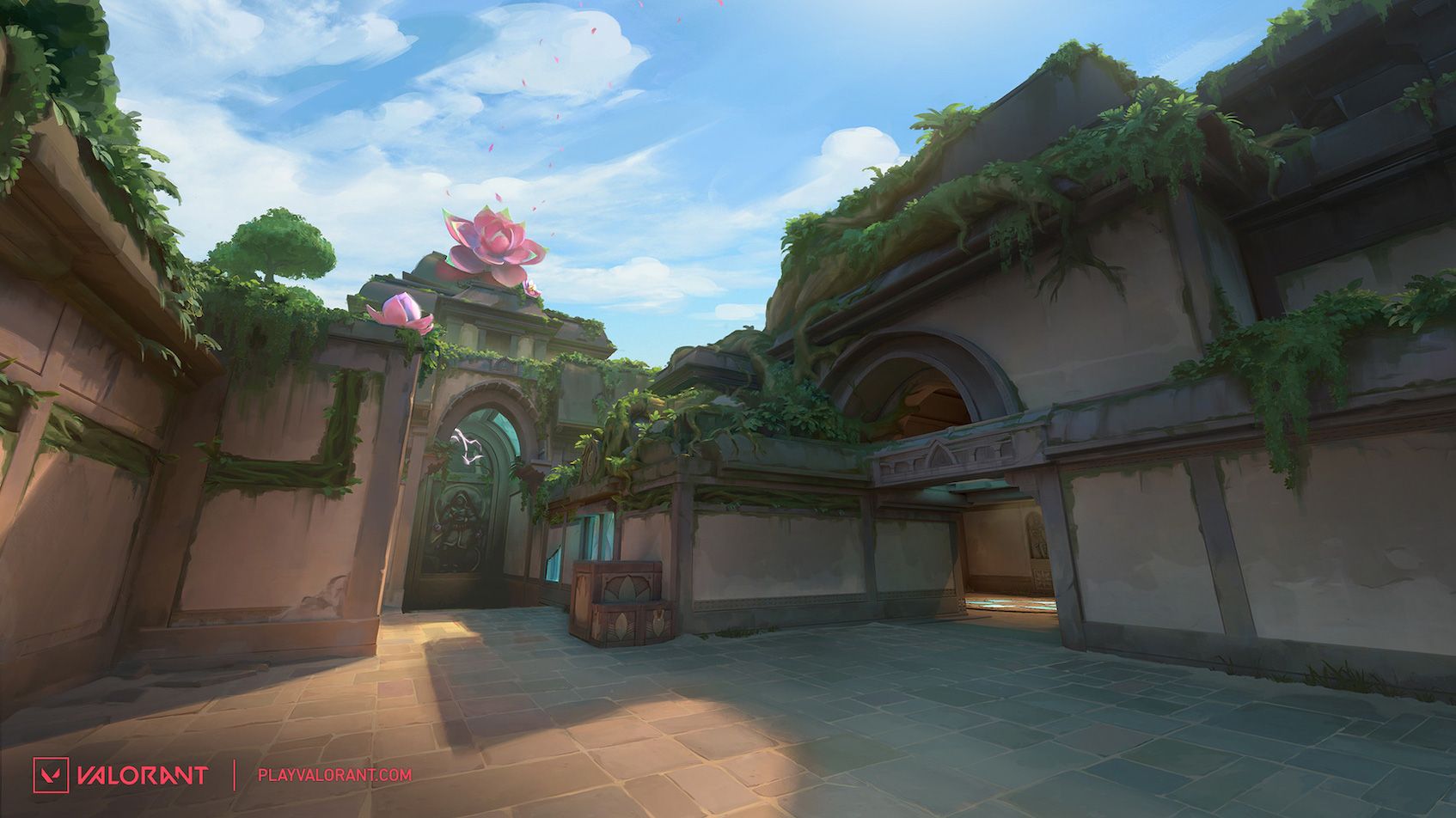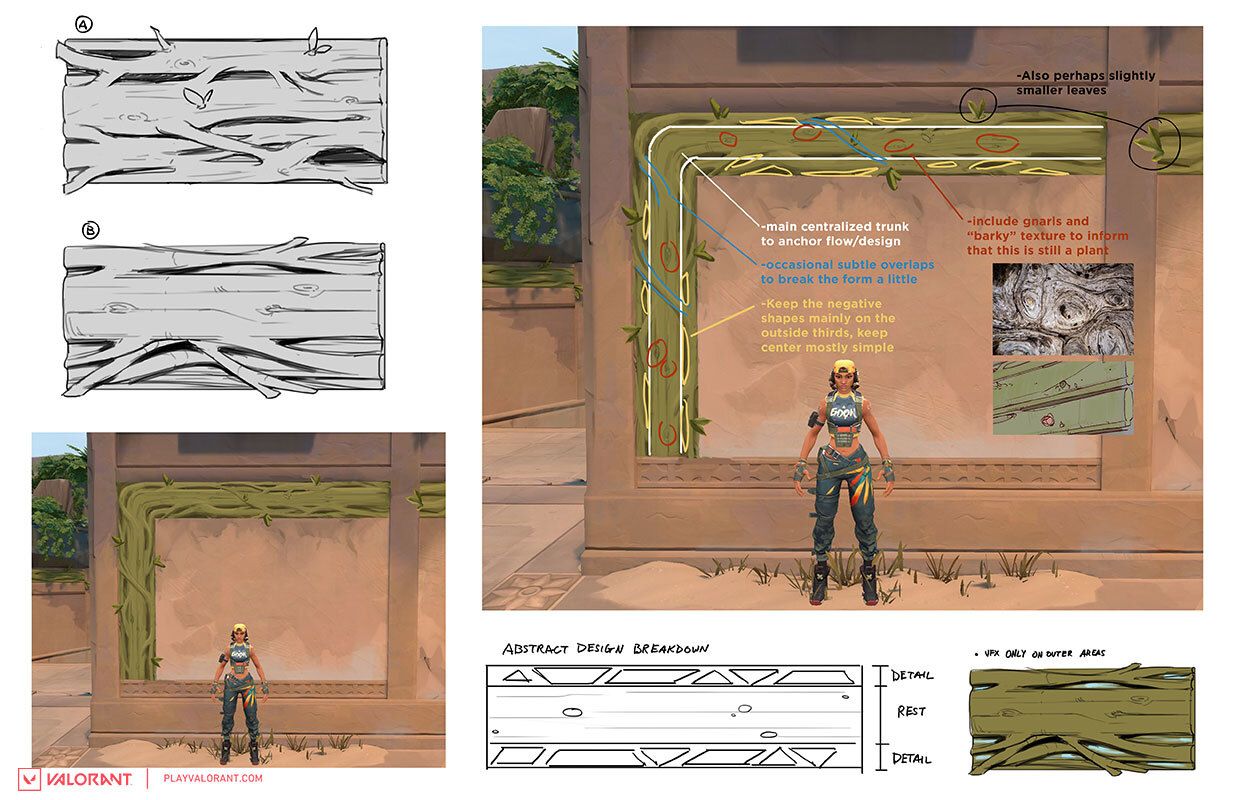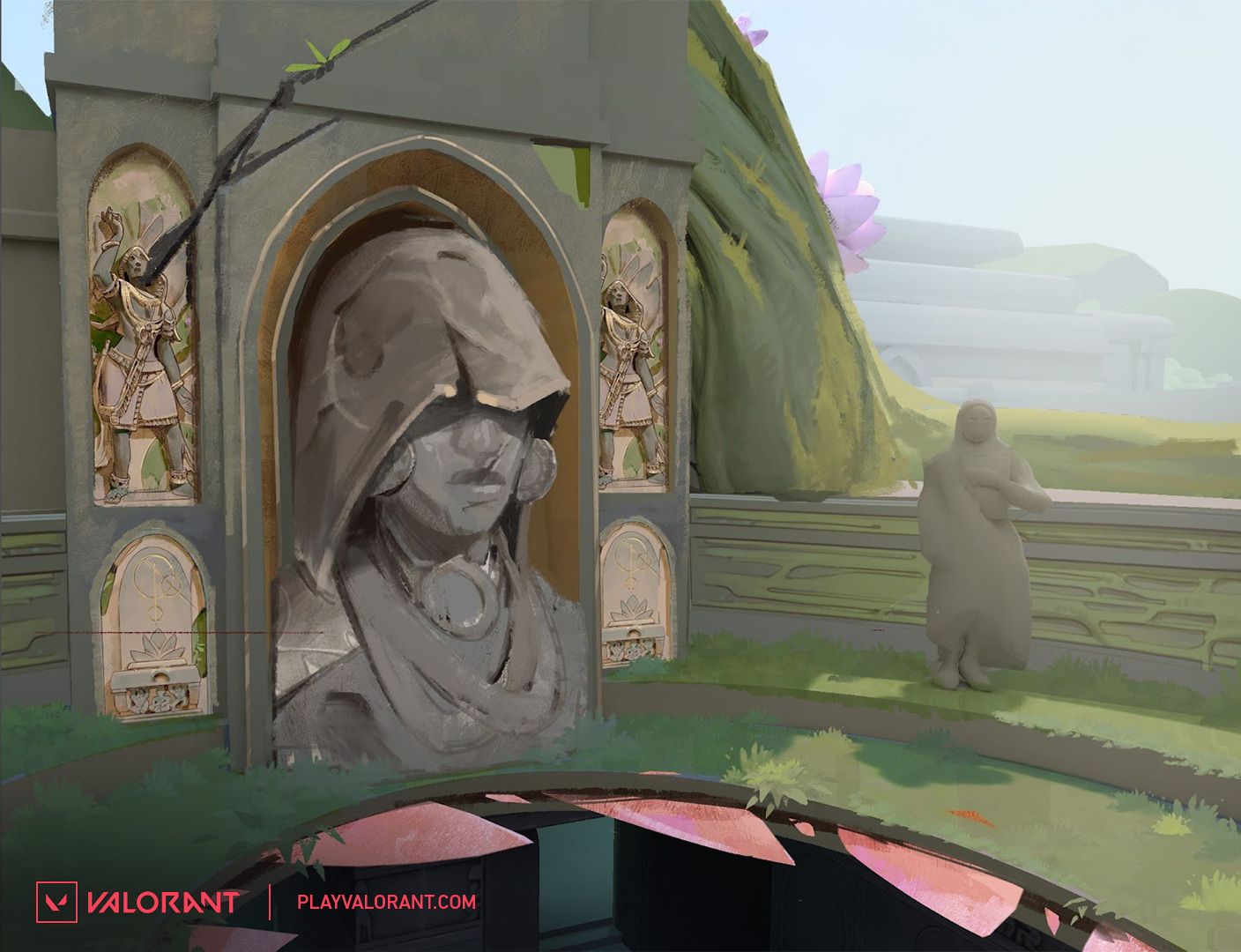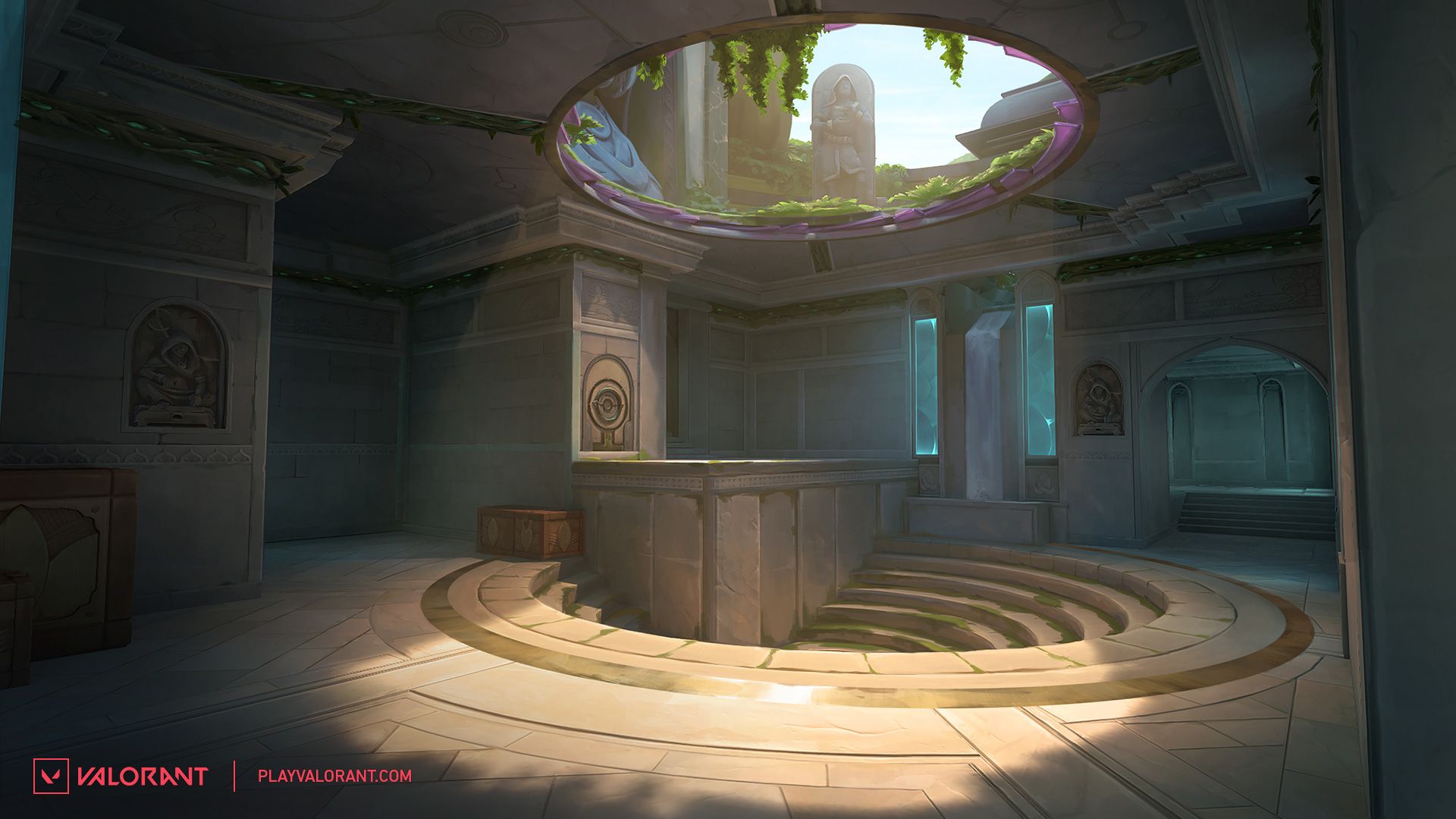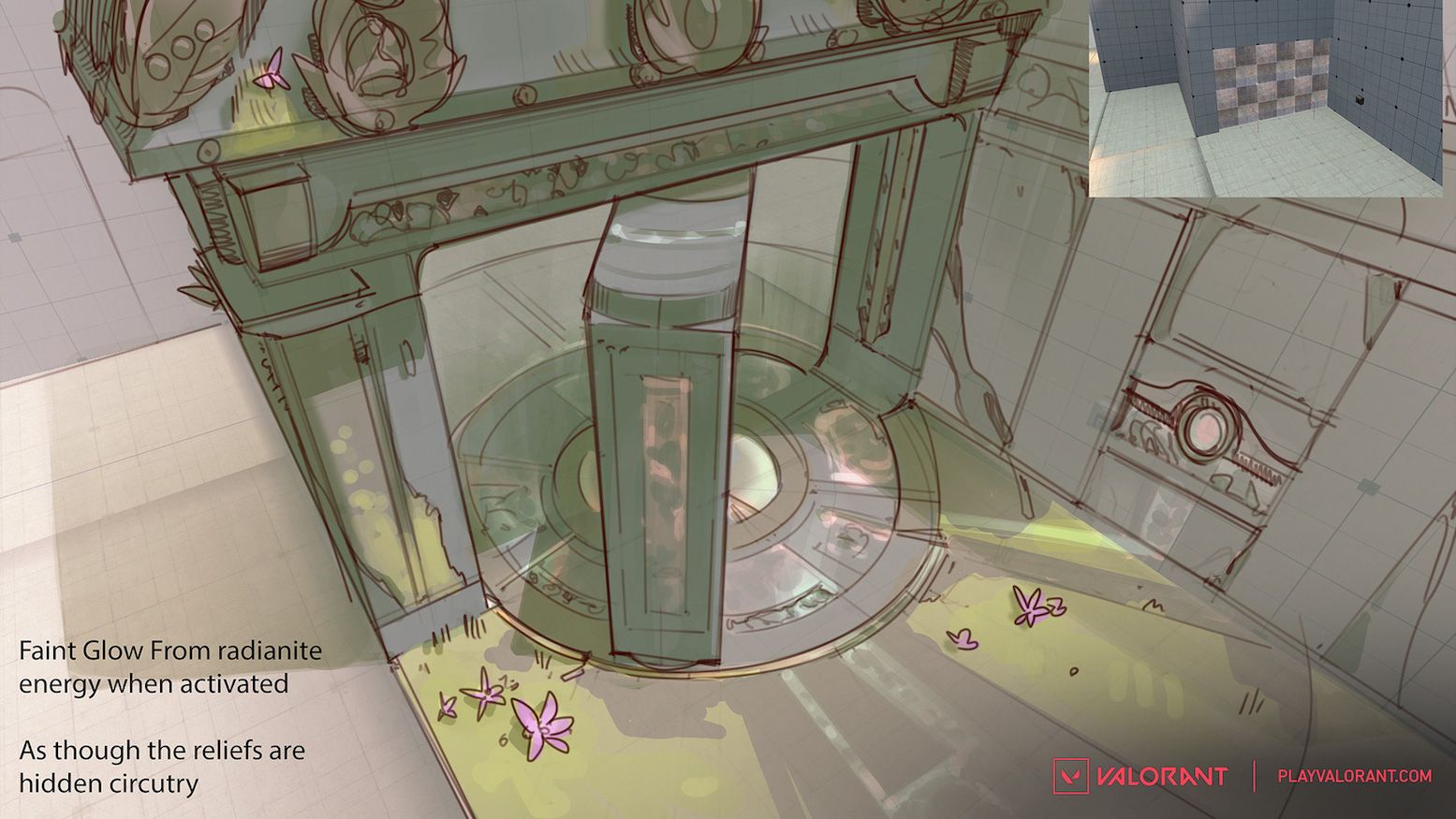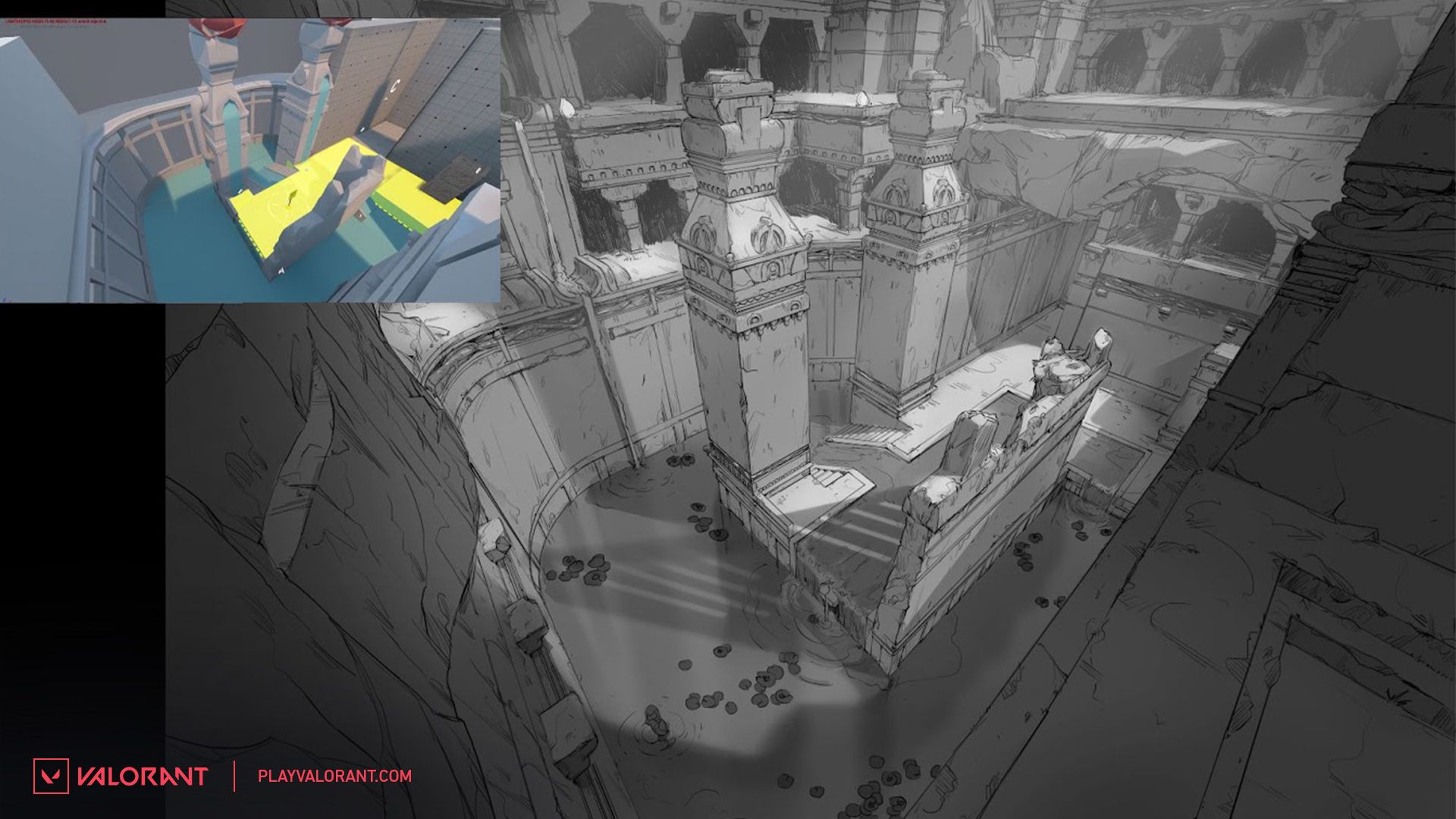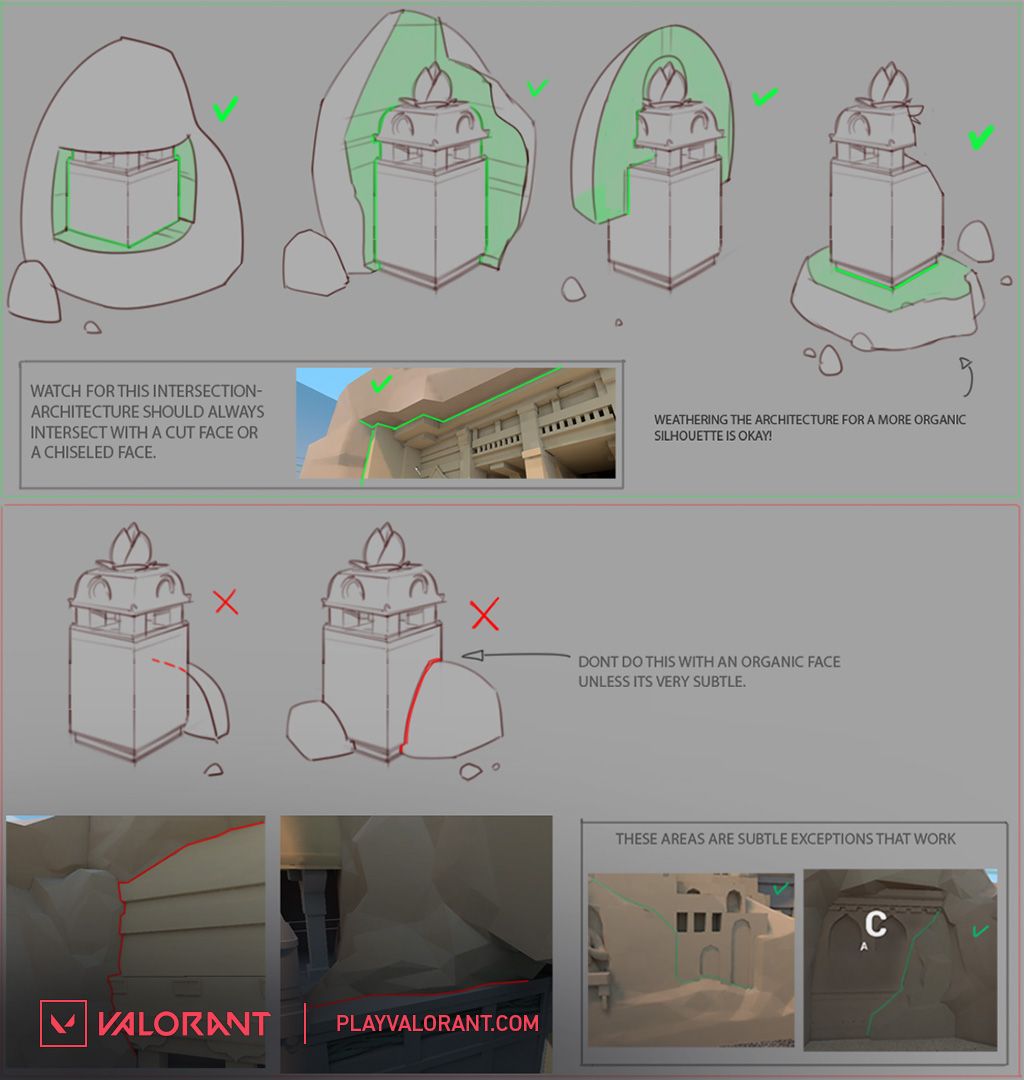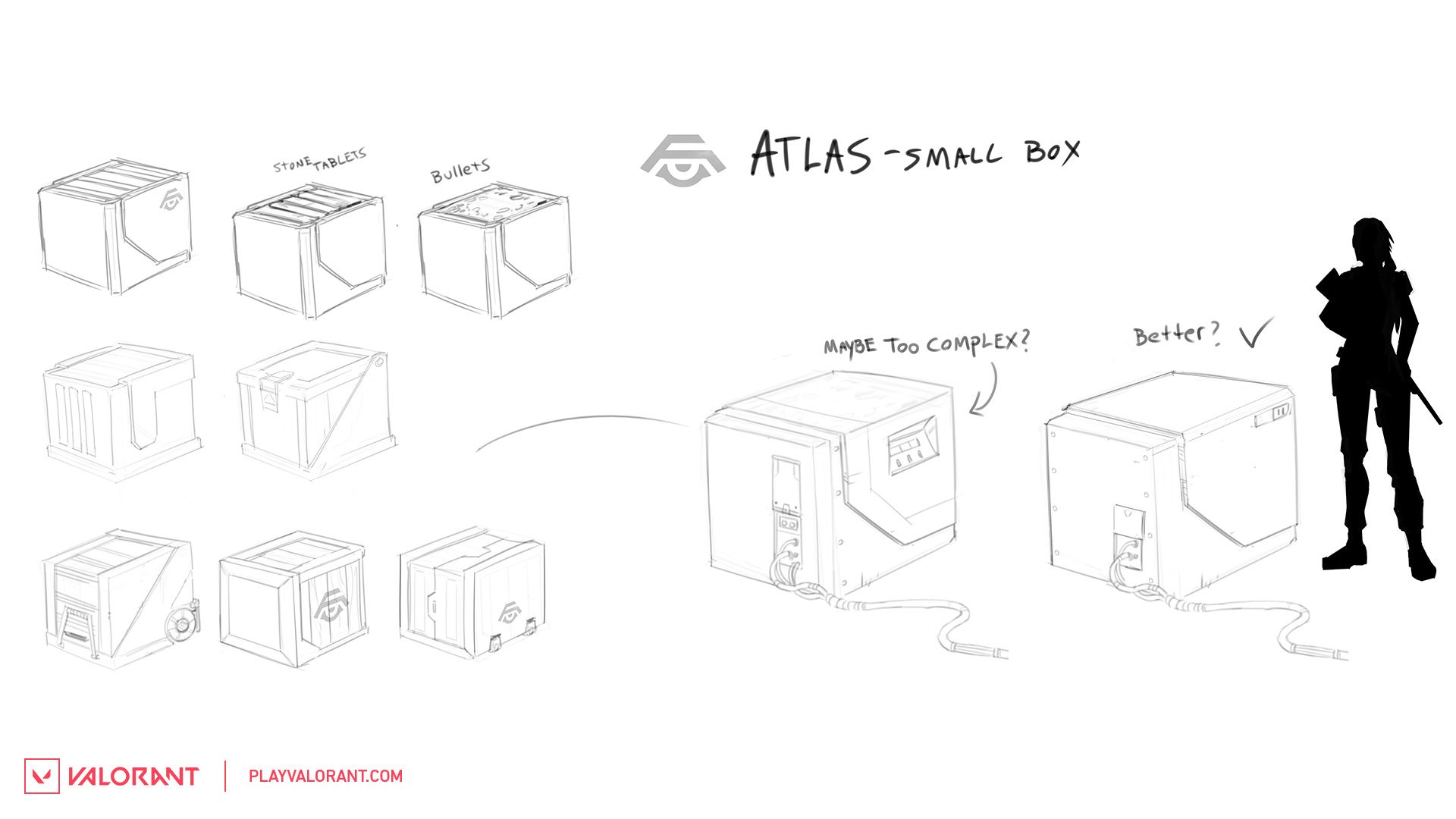Ancient murals that can be found throughout Lotus. Stop and check them out. But don’t stand still for too long…
Lotus: Unearthing VALORANT’s Lost City
In the lush forests of India, there is a place where plants, architecture, and technology work in harmony to amplify the energy of the sun. No, it’s not a modern sustainable energy lab, but an ancient ruin of the past.
Introducing Lotus, City of Flowers.
A Hidden History
These ruins—known only by their codename, Lotus—were hidden away for centuries in the heavily forested Western Ghats mountain range of southern India. Harbor, an explorer, adventurer, and the newest member of VALORANT Protocol, had been searching for the ruins for years after hearing rumors of the ancient technology that lay within their walls. But it wasn’t until he found the artifacts which granted him his water-bending powers that Harbor would be able to locate and unlock the Lotus ruins with some help from his teammate Astra.
In the Episode 6 launch cinematic, REVELATION, we see Harbor and Astra venture to Omega Earth to unlock the Lotus ruins and attempt to prevent VALORANT Legion’s acquisition of this sacred site. But the ancient technology they found hidden away when they arrived was astounding.
Something special happened here. Something powerful. Flower power. And the evidence of this plant technology is clearly recognizable as soon as you enter the map.
“When you’re looking at the compound from Attacker spawn, the first thing you’ll notice are the giant Lotus flowers above and around the ruins,” says Lead Environment Artist George “Riot Dadsquad” Sokol. “You’ll also notice giant vines that run throughout the map. The plants and vines grew to be abnormally large because they’re infused with radianite. The vines act as conduits for the radianite to power things around the ruins—like the two, giant rotating doors near A and C.”
A paintover illustration of the attacker side spawn area. Notice the giant lotus flower and green vines embedded in the ruin walls.
“Root circuitry, we like to call it,” adds Lead Concept Artist, Brian “Peppy Yambino” Yam. “The idea was that these plants were mutated by radianite to absorb large amounts of energy from the sun due to their size. As you explore the map, you’ll see these giant lotus leaves encased in blue panels that act as power storage for various features on the map. The ancients who built this place found a way to encase these lotus leaves to extract the energy they’d absorbed.”
Every detail of the map was planned out in concept art, even down to the texture of the ‘root circuitry.’
But what do these plants need to power? Well as it turns out, the ancients who built the structures on Lotus had more in mind than just a cool backdrop for a gun fight. The structure had a larger purpose. But what purpose?
An early illustration showing some of the statues and carvings of unknown figures.
“We see in the launch trailer that Astra plays a huge role in investigating Lotus. Through her sight abilities and many of the visuals on the map, we’re hinting that there’s a connection between the peoples of this Earth and something greater,” explains Joe “Pearl Hogbash” Lansford, lead level designer. “Lotus was built by a civilization who appear to have been aware of some powerful presence in the mirrorverse. And you’ll see evidence of that in the different shrines and shape language throughout the map."
A final paintover illustration of B site. The light shines through the oculus above the site to reveal carvings and mysterious statues.
The exact purpose of this place is still unknown, but Harbor and VALORANT Protocol have a hunch that Lotus played an important role in the lives of the people who built it.
For now, the details and hints designed into the map itself will have to suffice. Also, keep an eye out for more interactive narrative clues on the map as the story unravels.
Be Like Water
Look, we know a lot of you probably wish Omen could sense your pain and come rescue you from Bronze rank, but he can’t be pulled away from trimming his bonsai trees—again. So for now, your best hope is to learn the newest map in the pool and how to utilize its extremely fluid playstyle.
Lotus is a three site map with corridors that weave each of the plant sites together. Conveniently located hallways and passages make rotating from site to site quick and easy.
“A big design goal here was movement fluidity,” says Pearl Hogbash. “We wanted to allow teams to flex and pivot as the round progresses more easily than they often can on other maps.”
The main feature that makes Lotus unique is its two, giant mechanical doors that rotate 180 degrees. These solid pieces of stone take 8 seconds to fully rotate, and during their rotation they open otherwise blocked hallways for a limited time. The two doors are located near A main and C main and can be opened on either side of the door by attackers or defenders. The team also added a breakable door that opens up a connector between A and B sites to help nail down the fluidity they were after.
A fitting blue lotus adorns the concept for the breakable door.
“Teams can very quickly flex between sites and areas. Taking door control gives strategy power as well, like pinching someone in B main for example,” Pearl Hogbash adds. “The audio and minimap cues also allow for some fun mind games. Yoru can do some interesting stuff with his teleport, activating the door on one side of the map then jumping to the other. Or not… The main goal is to create interesting movement and utility decisions for both teams.”
A concept illustration with design notes. Also notice the same door feature in the original greybox test version of the map in the top right corner.
All of these features allow for strategic, satisfying gameplay with the ability to rotate quickly as an attacking team or retake sites as a defending one—and the design team spent a lot of time proving these concepts out in the greybox mesh. (If you’re not familiar, a greybox is a bare-bones version of the map where only the map’s skeleton exists, before any art and environmental details are added. Check out this article on map and environment design to learn more.)
“The greybox gets beat up pretty hard. In early playtesting, we'll walk away from a game wanting to change 20 different things. Slowly, over several months, the map gets more and more refined until we pass it off for art production,” Pearl Hogbash explains. “We also have a great team of gameplay analysts who are very skilled, deeply analytical thinkers who help a ton with understanding how a map will play on live."
Once Lotus’s greybox started feeling polished, it was time to hand things over to the artists who make the maps feel immersive, beautiful, and unmistakably VALORANT.
Environmental concept drawings
Environmental concept drawings over the top of greybox models of B site, C site, and Defender spawn.
Looking to the Ancient Past
Omega Earth might not be real (as far as we know), but it’s still based on a real place. Yup, you guessed it—Earth. So of course, the team took inspiration from some real places and real peoples of our planet.
“We were going through the process of picking different thematics for this new map and we eventually landed somewhere ancient,” Peppy Yambino says, “We took inspiration from the Petra ruins in Jordan. Petra has very interesting rock-cut architecture. And then somebody mentioned that we had an Indian agent in development. After doing some research, we found that India has similar kinds of ancient architecture. And we thought that lined up perfectly. So then we started looking towards India.”
The elaborate, ancient compound in Lotus was inspired by Dravidian architecture and some of the more than 1500 rock-cut ruins that are found throughout India. Dravidian peoples are a large cultural group found primarily in Southern India and Asia who speak one or more Dravidian languages. There are currently more than 250 million native speakers of Dravidian languages—one of the oldest language families on Earth. And Omega Earth.
Early concepts that show how the art team incorporated their rock-cut and Dravidian inspirations into Lotus.
The rock-cut features are most noticeable when near C site and Defender spawn. But the soft sloping roof caps commonly found in Dravidian structures are seen throughout all areas of the map.
“We actually worked with a doctorate of Indian studies, Dr. Fiza Vasudeva, on Lotus. She’s a scholar from India who was also a consultant on Harbor,” Pearl Hogbash reveals. “So we finished the creative guide for the map after doing a bunch of research on the architecture and design elements we were after. Then we had Dr. V audit it for authenticity and asked her to add some of her own advice and details.”
While something like authenticity is always deliberate, sometimes in game development things also happen by accident. While teams try to be intentional in everything they do, occasionally they stumble onto something that just happens to work.
Take for example everyone’s favorite TikTok and YouTube topic—lineups. How much does the design team think about lineups when they create a map?
“I’m definitely not a lineup person. I play Brimstone and Breach, and for me there’s no such thing as a lineup,” Pearl Hogbash smirks. “We measure areas for crosshair height, we look at corridor width for smokes and mollies, and we pay a lot of attention to how important angles play. But in terms of specific util lineups, we don’t really build anything like that intentionally. We just let the art kind of be the guide.”
If there’s one thing that makes Lotus beautiful (other than the gorgeous vistas and massive lotus flowers), it’s the art. As you move around the map, you’ll see murals and carvings of animals that are native to the Western Ghats like elephants, panthers, cobras, and peacocks.
Ancient murals
Concept drawings for the small ATLAS crates on Lotus.
In the words of Astra herself, “The amount of power held here is staggering… There’s still so much I don’t know.”
The secrets of Lotus will be revealed in time. For now, the fighting amongst the ruins is just beginning.
